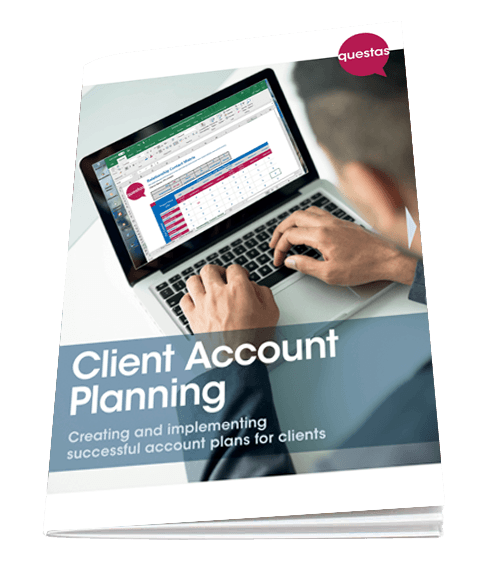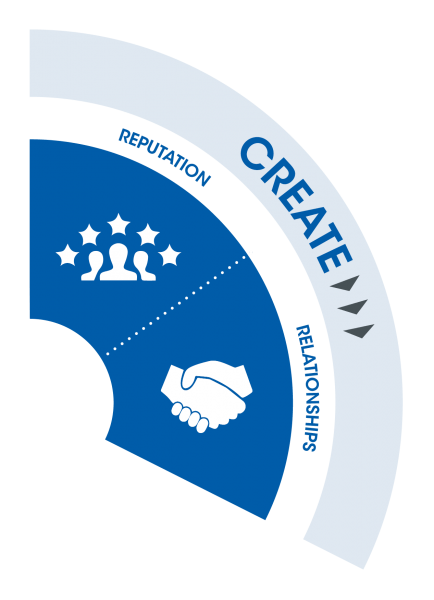 This article originally appeared in the October 2017 edition of Pi magazine, published by Howden Insurance Brokers
This article originally appeared in the October 2017 edition of Pi magazine, published by Howden Insurance Brokers
Developing and implementing successful key account management programmes takes time and commitment. Gillian Sutherland provides advice on the steps you can take to ensure your investment pays off.
Businesses that are struggling to grow may exhibit a range of behaviours, from under investment in employees, through to reckless diversification that heightens risk profile.
With client retention and winning new business sitting near the top of the list of challenges faced by many professional services, Gillian Sutherland of Questas Consulting provides advice on maintaining effective client management programmes.
Professionals are naturally client focused, so winning the argument for setting up a client management programme is not usually a problem. The difficulty occurs when the programme appears to run out of steam; senior people start to ask what the business is getting out of it and, indeed, what the clients are getting out of it.
Why client management programmes falter
The most common reason is a lack of definition of what the business wants to achieve from the programme, which is why defining and agreeing this at the beginning is so important. In addition, expectations need to be set around timescales for making a difference. A client programme is a change programme and, as with all change, this takes time. Depending on the size and complexity of the business, it can take up to two years to see a noticeable shift.
Before you start a new client management programme
Prior to starting, I recommend a review of where you are now. Doing some analysis of your current client base allows you to understand the shape of your business, the number and size of your clients and how they are distributed by value and margin. This will help you to work out what you want the client base to look like and what type of programme you should embark on.
Ask questions like:
- Who are the big/key clients?
- Does the 80:20 rule apply (80 per cent of your business comes from 20 per cent of your clients) or is it nearer 90:10?
- How long is the ‘tail’ of small clients?
- What is the revenue spread across different sizes of clients?
- Which clients are profitable?
This type of analysis will help you work out where you want to focus your efforts.
Grow your key client relationships
Learn what you can do to retain and develop you best clients
What makes the programme a success?
Success depends on a number of factors and will vary from firm to firm. However, in my experience, the five factors below have a major impact on the success or failure of a programme:
1. Visible buy-in at board or executive level
Without real, visible buy-in at the top of the organisation, the programme will not work – if you do not have it, do not start! The programme should be on the board agenda and the programme leader should be reporting to the board on a regular basis. The board needs to buy into the long-term aspect of the programme. No matter the ultimate goal, this programme should change the culture of the firm and this takes time. You can only move at the pace of your clients – growing a long-term client relationship takes many years. Regular updates to the business from the board sponsor will position the programme as a crucial part of the firm’s activities.
2. Clear programme objectives.
The organisation needs to know why it is running the programme and what it wants to achieve out of it for the firm, the clients and the individuals involved.
Having done the analysis to understand the make-up of your current client base and asked some questions around what the ideal would look like, you should now be able to set clear goals and objectives for the programme and communicate them to the business. Goals and objectives could focus on:
- sales – to increase profitable work
- client care – to improve client satisfaction that leads to increased repeat business
- culture change – to achieve a client-centric culture
- key clients – to increase attention on the top clients and potential top clients to move these from transaction to relationship-based clients
3. Ability to measure success
A good, usable client relationship management (CRM) system with clear reporting will allow you to see how you are doing month by month. Without this, it is subjective. If you don’t have a CRM system, you must work out a way of communicating, reporting and measuring progress. The reporting needs to reflect achievement of the programme’s goals. It is important to measure both inputs and outputs, as without inputs the outputs will not happen. Examples of these include:
Inputs
- Number of review meetings with the client
- Number of sales meetings held
- Number of social interactions
- Number of opportunities identified
- How often we are sole sourced
- Number of introductions to new services
- Number and type of innovations presented to the client
Outputs
- Growth of the programme
- Growth of clients, turnover and margin
- Growth of pipeline
- Additional services sold
- Additional locations introduced
- Bid win rate
- Client feedback scores
4. The right account leads.
Enthusiastic client account leads who have the right behaviours and the interests of the whole firm in mind will make the programme a success. They should have good client awareness and preferably an existing relationship with the client. They need to be recognised and rewarded accordingly. Time spent on account manager selection is a good investment. It is highly unlikely that you will have a perfect set of client account managers within your firm.
In most professional firms, account leads are allocated from the partner group, who have usually had no formal training in this area. Training and coaching can greatly enhance the skills and, therefore, success of the managers. Once the account lead has been selected, they should identify the top internal team, who will drive the programme. This is usually six to eight people, however everyone who works with the client will be part of the wider team. Inclusion and good team communication will make the programme fly and will enable others to help develop the client.
5. A committed programme lead.
Someone needs to run the programme, drive the actions and coach the account leads. The programme lead needs to be senior, with a commercial outlook and direct access to the board. They need to have the respect of the senior teams leading the client accounts in order to be able to drive activity. Finally, in order to run a successful programme, you must involve your clients. This is not something you can do to clients, it has to be done with clients. Once you have laid the foundations for your programme, it is wise to consider – what’s in it for the firm, what’s in it for our clients and what’s in it for our people? This should give clarity on the important question of ‘why’ you are doing it.
For more help to build your best key account management team in the professional and engineering services industry, Questas offers a unique training course aimed at your industry’s challenges. See our Retain: Key Client Management Courses here.
Account management planning
Strategic and tactical approaches to client account management.
 Make your Key Account Planning successful
Make your Key Account Planning successful
Download your free guide to grow your key account management skills.







